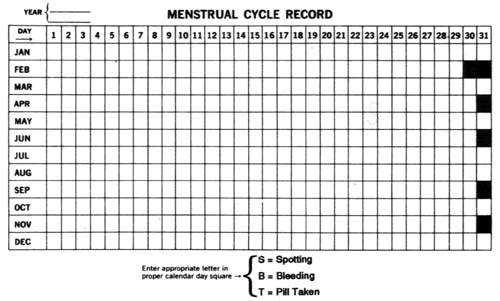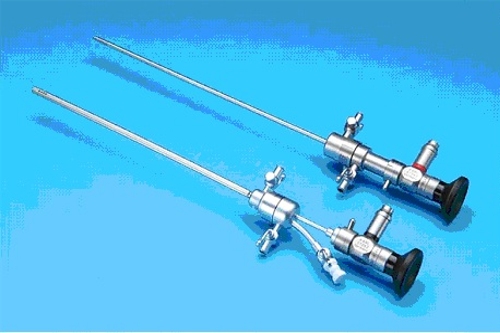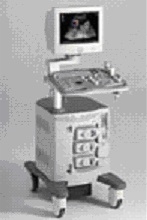Probleme, Risiken, Komplikationen und Diagnose
Auswirkungen von starken Gebärmutterblutungen
n estimated 10% of all women in their reproductive years have chronic gynecologic problems.
Nearly 30% of women reporting such problems spend one or more days in bed per year because of them.
Anemia
- Menorrhagia is the most common cause of anemia in premenopausal women.
- According to one report, 10% of women in their reproductive years have iron deficiencies, and between 2% and 5% have iron levels low enough to cause anemia.
- Although poor diets play a role in many cases, the problem is compounded in women who have heavy periods.
- Most cases of anemia are mild. Nevertheless, even mild anemia can reduce oxygen transport in the blood, causing fatigue and a diminished physical capacity. (In fact, some studies indicate that even iron deficiency without anemia can produce a subtle but still lower capacity for exercise.) Moderate to severe iron-deficiency anemia is known to reduce endurance.
- Moderate to severe anemia can also cause shortness of breath, rapid heart rate, lightheadedness, headaches, ringing in the ears (tinnitus), irritability, pale skin, restless legs syndrome, and mental confusion. Heart problems can occur in prolonged and severe anemia that is not treated. Pregnant women who are anemic, particularly in the first trimester, have an increased risk for a poor pregnancy outcome.
Pain
- Heavy bleeding is often accompanied by menstrual cramps, particularly if the bleeding is caused by uterine fibroids
Infertility
- Some conditions associated with heavy bleeding, such as ovulation abnormalities, fibroids, or endometriosis, are important contributors to infertility.
Diagnose von starken Gebärmutterblutungen
It is often very difficult to diagnose true menorrhagia.
For one, it is very difficult to measure blood loss during menstruation, and the perceptions of women as well as their physicians vary widely.Some women may overestimate their menstrual flow. Some women underestimate it. For example, women with a family history of bleeding disorders might have menorrhagia but think it is normal because it is the same as their mother’s or sister’s.
Physicians may underestimate their patient’s flow.
Pelvic Examination
A physician will perform a pelvic examination to check for pregnancy-related conditions and for signs of fibroids or other abnormalities, such as ovarian cysts.
Medical and Personal History
The physician needs to have a complete history of any medical or personal conditions that might be causing heavy bleeding.
He or she may need the following information:
- Any family history of menstrual problems or bleeding disorders (which should be suspected in teenage girls with heavy bleeding). It should be noted that, in some cases, young women with heavy bleeding from inherited conditions may not even report it if they grew up in a family where such bleeding was considered normal.
- The presence or history of any medical conditions that might be causing heavy bleeding. Women who visit their gynecologist with menstrual complaints, particularly heavy bleeding, pelvic pain, or both may actually have an underlying medical disorder, which must be ruled out.
- The pattern of the menstrual bleeding. (If it occurs during regular menstruation, nonhormonal treatments are tried first. If it is irregular, occurs between periods, occurs after sex, is associated with pelvic pain, or if it occurs with premenstrual pain, the physician should look for specific conditions that may cause these problems.)
- Regular use of any medications (including vitamins and over-the-counter agents).
- Diet history, including caffeine and alcohol intake.
- Past or present contraceptive use.
- Any recent stressful events.
Keeping a Menstrual Diary.
- The patient can provide much of this information by keeping a diary of the amount of bleeding and pain that occurs over the course of two or three menstrual cycles is very helpful.
- One method is to track menstrual flow day by day by observing the pad or tampon.
- It uses a score of 1 to 20 to signify very light staining to extremely heavy staining.
- The diary would also use a scale for pain of 0 to 4 (no pain to severe pain).

Hysteroscopy
Hysteroscopy is a procedure that may be used to detect the presence of fibroids, polyps, or other causes of bleeding.
It is done in the office setting and requires no incisions.
The procedure uses a long flexible or rigid tube called a hysteroscope, which is inserted into the vagina and through the cervix to reach the uterus. A fiber optic light source and a tiny camera in the tube allow the physician to view the cavity. The uterus is filled with saline This may causecramping.
Hysteroscopy is non-invasive procedure.

Complications include excessive fluid absorption, infection, and uterine perforation.
Hysteroscopy is also employed as part of surgical procedures.
Imaging Techniques
Ultrasound and Sonohysterography.

- Ultrasound is the standard imaging technique for evaluating the uterus and ovaries, detecting fibroids, ovarian cysts and tumors, and also obstructions in the urinary tract.
- It uses sound waves to produce an image of the organs and entails no risk and very little discomfort.
- Transvaginal sonohysterography uses ultrasound along with saline infused into the uterus, which enhances the visualization of the uterus
Magnetic Resonance Imaging.
Magnetic resonance imaging (MRI) gives a better image of any fibroids that might be causing bleeding, but it is expensive and not usually necessary.
Endometrial Biopsy With or Without Dilation and Curettage (D&C)
When heavy or abnormal bleeding occurs, an endometrial (uterine) biopsy can be performed in the office along with an ultrasound.
It is usually used with a procedure called dilation and curettage (D&C), which is particularly important to rule out uterine (endometrial) cancer.
A D&C is a somewhat invasive procedure:
- A D&C is usually done in an outpatient setting so that the patient can return home the same day, but it sometimes requires a general anesthetic. It may need to be performed in the operating room to rule out serious conditions or treat some minor ones that may be causing the bleeding.
- The cervix (the neck of the uterus) is dilated (opened).
- The surgeon scrapes the inside lining of the uterus and cervix.
The procedure is used to take samples of the tissue and to relieve heavy bleeding in some instances. D&C can also be effective in scraping off small endometrial polyps, but it is not very useful for most fibroids, which tend to be larger and more firmly attached.
Blood Tests
- Tests for bleeding disorders are important, particularly in very young women, before proceeding with invasive tests.
- Certainly blood testing for anemia is an important consideration in determining the need and type of treatment.
